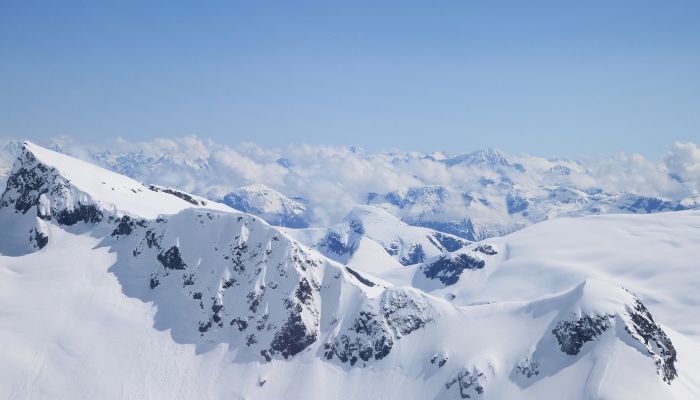Polar Nights in Alaska: An Enchanting Dance of Darkness
Alaska, the Last Frontier, is renowned for its breathtaking landscapes, diverse wildlife, and extreme weather conditions. Among the most fascinating natural phenomena experienced in this northernmost state is the polar night. This period of prolonged darkness, which occurs in areas above the Arctic Circle, transforms the environment into a surreal, almost otherworldly place. In this blog post, we will delve into the science, the experience, and the cultural significance of polar nights in Alaska.
What is a Polar Night?
A polar night occurs when the night lasts for more than 24 hours. This phenomenon is limited to regions within the polar circles, with the Arctic Circle encompassing parts of Alaska. The Earth’s tilt and its orbit around the sun cause this unique event. During winter, the North Pole is tilted away from the sun, resulting in extended periods of darkness for areas within the Arctic Circle.
In Alaska, the town of Utqiagvik (formerly known as Barrow) is one of the most well-known places to experience polar nights. Here, the sun sets in mid-November and does not rise again until late January, resulting in approximately 64 days of continuous night (source).
The Science Behind Polar Nights
To understand polar nights, it’s essential to grasp the Earth’s axial tilt. The Earth is tilted at an angle of about 23.5 degrees relative to its orbit around the sun. This tilt is responsible for the changing seasons. During winter solstice, which occurs around December 21st, the Northern Hemisphere is tilted away from the sun. Consequently, regions within the Arctic Circle receive no direct sunlight, leading to the polar night.
The length of the polar night varies depending on the latitude. The closer a location is to the North Pole, the longer the period of darkness. For instance, in Utqiagvik, the sun remains below the horizon for about 66 days (source).
Experiencing Polar Nights in Alaska
Living through a polar night is a unique experience that can be both enchanting and challenging. The absence of sunlight affects not only the environment but also the daily lives and mental well-being of residents.
The Magic of Darkness
Despite the lack of sunlight, polar nights are far from monotonous. The sky often dazzles with the ethereal glow of the aurora borealis, or northern lights. These mesmerizing displays of green, pink, and purple lights dance across the sky, creating a magical atmosphere. The auroras are caused by charged particles from the sun colliding with the Earth’s atmosphere, and the darkness of polar nights provides an ideal backdrop for these natural light shows.
Additionally, the snow-covered landscape reflects any available light, creating a serene and almost luminous environment. The moon and stars shine brighter, and the crisp, cold air adds to the sense of tranquility.
The Challenges of Prolonged Darkness
While polar nights can be beautiful, they also present significant challenges. The lack of sunlight can disrupt circadian rhythms, leading to sleep disorders and seasonal affective disorder (SAD). Residents often use artificial light therapy to mitigate these effects, simulating natural sunlight to help regulate their internal clocks.
The continuous darkness also impacts daily activities. Outdoor work and travel become more difficult, and the cold temperatures can be extreme. However, Alaskans are resilient and have adapted to these conditions over generations.
Cultural Significance of Polar Nights
Polar nights hold a deep cultural significance for the indigenous peoples of Alaska, such as the Iñupiat. These communities have lived in harmony with the Arctic environment for thousands of years, developing unique traditions and practices to cope with the extended darkness.
Traditional Practices
The Iñupiat have a rich cultural heritage that includes storytelling, music, and dance. During the polar night, these activities take on special importance as ways to pass the time and maintain social bonds. Storytelling, in particular, is a cherished tradition, with elders sharing tales of the past, myths, and legends that have been passed down through generations.
Modern Adaptations
In modern times, Alaskan communities have embraced both traditional and contemporary practices to navigate the polar night. Festivals and community events are organized to bring people together and celebrate the unique aspects of their environment. For example, the Kivgiq, or Messenger Feast, is a traditional Iñupiat festival held in mid-winter, featuring dancing, drumming, and feasting.
The Impact of Climate Change on Polar Nights
Climate change is affecting the Arctic region at an alarming rate, and polar nights in Alaska are not immune to its impacts. Rising temperatures and melting ice are altering the environment in ways that could have profound effects on the natural phenomena and the communities that depend on them.
Changes in Ice and Snow
Warmer temperatures are leading to reduced sea ice and changes in snow patterns. These changes can disrupt traditional hunting and fishing practices, which are vital for the subsistence lifestyle of many indigenous communities. Additionally, the loss of ice impacts the habitats of Arctic wildlife, such as polar bears and seals, which rely on ice-covered waters for hunting and breeding.
The Future of Polar Nights
As the climate continues to warm, the duration and intensity of polar nights may be affected. Scientists are studying these changes to understand their potential impacts better. However, the resilience and adaptability of Alaskan communities provide hope that they will continue to thrive despite these challenges.
Visiting Alaska During Polar Nights
For adventurous travelers, experiencing a polar night in Alaska can be a once-in-a-lifetime opportunity. The unique environment offers a chance to witness the beauty of the Arctic in a way that few people ever do.
Preparing for the Trip
Visiting Alaska during the polar night requires careful planning and preparation. The extreme cold and darkness necessitate appropriate clothing and gear. Layered clothing, insulated boots, and high-quality outerwear are essential to stay warm. Visitors should also be prepared for limited daylight and the need to use artificial light sources.
Activities and Attractions
Despite the challenges, there are many activities to enjoy during the polar night. Dog sledding, snowmobiling, and ice fishing are popular outdoor pursuits. The aurora borealis is a major attraction, with guided tours available to help visitors capture the best views of this natural wonder.
Cultural experiences are also a highlight. Many communities offer opportunities to learn about indigenous traditions, participate in local festivals, and engage with the rich cultural heritage of the region.
Conclusion
Polar nights in Alaska are a testament to the incredible diversity and resilience of our planet. This period of prolonged darkness challenges both nature and humanity, yet it also reveals the beauty and adaptability of life in the Arctic. From the enchanting dance of the northern lights to the deep cultural traditions of the Iñupiat, polar nights offer a unique and profound experience.
For those who live through them, polar nights are a way of life, a time to connect with the past and embrace the present. For visitors, they provide a glimpse into a world that is both harsh and beautiful, a reminder of the power and mystery of the natural world. As we continue to face the challenges of climate change, the lessons learned from polar nights in Alaska will be more important than ever, guiding us toward a future where we can coexist with our environment in harmony and respect.






